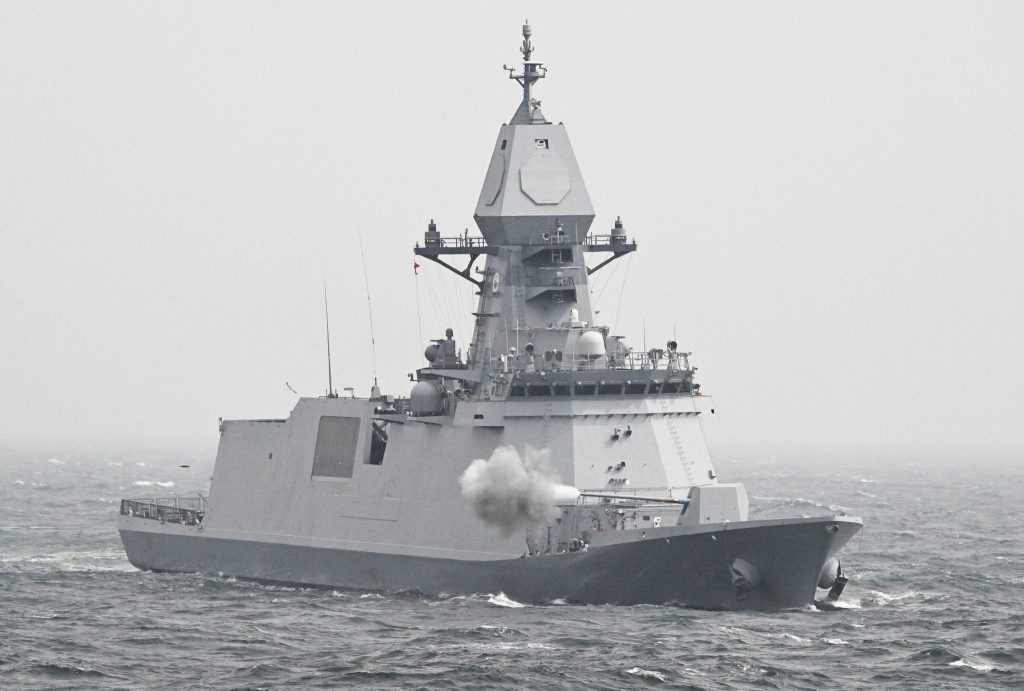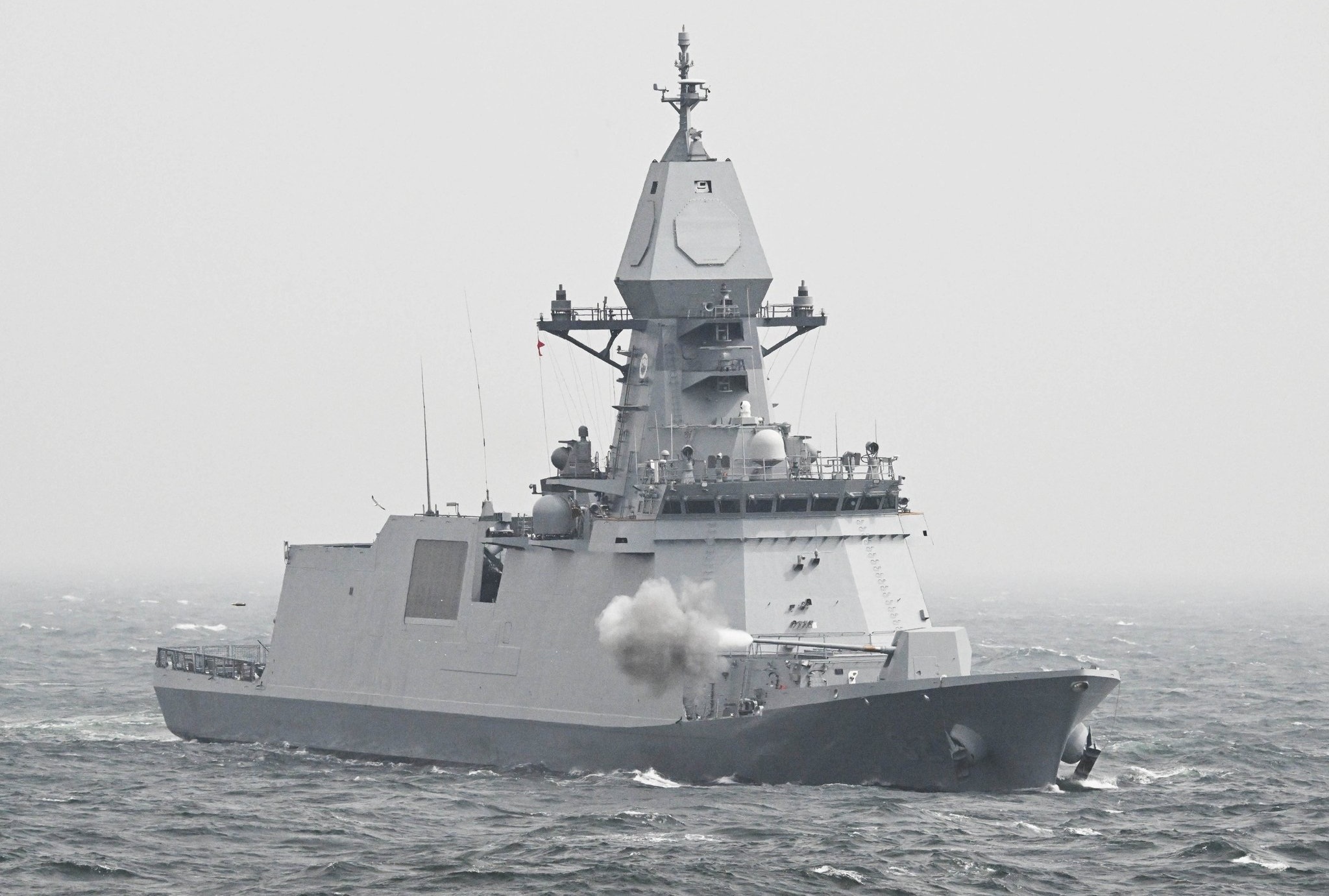HD Hyundai Offered an Improved Chungnam-class Frigate to the Philippine Navy
According to this South Korean publication D-Milli-charge (v.daum.net), South Korea reportedly offered an improved design variant of the Chungnam-class Frigate for the Philippine Navy.
This comes as the fleet now aims to secure another pair of ships, most likely an improved variant of the Miguel Malvar-class frigate, as part of the Frigate Acquisition Project – Full complement of the Philippine Navy.
Although this is interesting news in itself, it should be noted that nothing is final as the negotiations are ongoing. But do take note that it will not be surprising news if the design chosen for this project will likely be patterned after the Chungnam-class frigate after all, even though either a follow-on order of the Miguel Malvar-class or its improved variant will likely be the one that the Philippine Navy gets.
As expected, the same report below forecasted that the likely finalization of the deal will take place within the year 2025, most likely by the month of November and December, as they will also aim to finalize the contract and utilize the current year allotments set aside for this project.
The upcoming months will be an interesting development for the Philippine Navy’s acquisition initiative for its Frigate Acquisition Project – Full Complement.
The following report below is a direct quote from the said publication, translated to English through a built-in browser.

As the conflict with China in the South China Sea intensifies, the Philippines is in the midst of negotiations to acquire additional Korean-made combat ships, which has attracted significant attention.
The combat ships scheduled to be introduced this time are the 4,000-ton class, a step up from the existing 3,000-ton class, and are likely to be an improved version based on the latest Chungnam-class frigates in service with our Navy.
As the Philippines’ naval power modernization project, which began in 2019, reaches its peak, major changes are expected in the military balance of Southeast Asian waters.
For what reason did the Philippines prefer Korean-made combat ships?
And what impact will this additional introduction have on the local situation?Last-minute negotiations with Hyundai Heavy Industries, high possibility of contract within the year
According to the shipbuilding industry on September 5, Hyundai Heavy Industries and the Philippine Army are in last-minute negotiations to contract two more frigates of more than 3,000 tons.Unless something major goes wrong, it is expected that orders will be available within this year.
The reason for the attention given to these negotiations is the suddenness with which an unscheduled project is being pursued.
The Philippines is currently strengthening its forces through the Horizon 2 project, and the introduction of two submarines through the Horizon 3 project is confirmed in the future.
However, this project is being carried out separately in a situation where the schedule for additional introduction of combat ships has not been specifically set.
The industry analyzes that given that the introduction of additional existing traps would not require months of negotiations, the continuation of negotiations until the end of this year means that the Philippines will likely order new traps that it has not introduced so far.
Emergency power buildup triggered by deepening maritime conflict with China
The reality is that maritime conflicts with China are intensifying behind the Philippines’ rush to introduce unscheduled combat ships.Recently, China has been posing a physical threat by intentionally ramming and sinking Philippine ships or launching impact attacks with large coastal ships.
In this situation, the Philippine military is trying to quickly deploy armed combat ships to the front lines.
Since the Chinese Navy has not yet been able to directly attack armed warships, it is believed that if combat ships are deployed, they can safely carry out maritime security missions.
In particular, before the Horizon 3 project, a large-scale power enhancement project worth 50 trillion won, begins in earnest, there is a glimpse of a strategic intention to expand control over the frontline seas by quickly deploying two additional new ships.
Excellent cost-effectiveness of Korean combat ships and practical verification completed
It is clear why the Philippines prefers Korean-made combat ships.This is because of its excellent cost-effectiveness and proven performance in practice.
In the case of European-built combat ships, when similar displacement is purchased, the cost of introduction is often 1.5 to more than twice as high or the armament is poor.Even more surprising is the Philippine Navy’s rapid operational performance.
Usually, when a large ship of several thousand tons is introduced, it takes at least a year to be properly operated, but the Philippines sent the frigate introduced from Korea to sea training in a matter of months, demonstrating the achievement of destroying the target ship with missiles.
This was possible because South Korea did not simply provide ships, but also provided training for more than 100 crew members through training centers, and provided all the infrastructure at once.
In the case of the 3,000-ton frigate, the battleship can be operated over long distances only if the familiar crew moves organically in their respective fields, and it is considered a refreshing shock to cross rough seas to Hawaii.
There is a high possibility of introducing an improved version based on the 4,000-ton Chungnam class
The exact type of combat ship that the Philippines will introduce this time has not yet been revealed, but the industry predicts that there is a high possibility of introducing an improved version based on the Chungnam ship that has recently been deployed in our navy.This is because Hyundai Heavy Industries has so far exported 3,000 tons of frigates to the Philippines, but has disclosed that the additional combat ships it is introducing are 4,000 tons.
Chungnam, where the Navy’s first ship was deployed in combat at the end of last year, is an advanced version of the Daegu class, but its displacement has increased by nearly 1,000 tons to 4,300 tons, and its air defense capabilities have been greatly enhanced by being able to operate the integrated mast deer AESA radar.
The integration of powerful long-range radar and detection systems and the fitting of 16-cells on vertical launchers allowed a variety of armed operations.
The big advantage is that we can use this to provide air defense nets to our allies as well.
In addition, the combat system and radar developed by Hanwha are integrated, making it compatible with the combat ships already operated by the Philippine Navy, making it effective for troop training.Strong Chinese backlash and changes in regional military balance
China strongly condemns the Philippines, which does not even have proper radar, as it introduces large warships one after another.They are even criticizing their supplier, Korea, for saying it could disrupt stability in the South China Sea.
As they even operate maritime warfare anti-ship missiles, they appear to be rather wary as it becomes difficult to threaten them in close proximity.
The performance of warships is highly regarded in that Korea provides the foundation for the Philippine Navy to emerge from a coastal sea-level navy to an ocean-going navy.
As the Philippines quickly pursues Thailand, which is considered to have the strongest naval power in Southeast Asia with Korean-style aircraft carriers and seven combat ships over 3,000 tons, it is emerging as a country that can not only keep the Chinese navy in check but also gain regional hegemony.
Project implementation is expected to accelerate with support from the Korean Vice Minister
It appears that the introduction of this new combat ship will require a larger budget than before.If the Jose Rizal class and Miguel Malvar class were introduced at around 300 million dollars per ship, it is analyzed that this project will cost more than 500 million dollars per ship.
However, it is expected that the Korean government will be more likely to actively provide loans, which will lower the burden of raising initial funds.
Our government is known to have quickly succeeded in introducing the recently supplied Diego Silang ship by lending construction costs through a loan, and it is highly likely that the next combat ship will also be actively provided with a loan.
If Hyundai Heavy Industries and the Philippine government negotiate, it is expected that construction will be possible quickly in about a year because the construction cost will be provided directly to the company and an intermediate payment will be made in between.
As negotiations to build additional unexpected combat ships are known to be underway, it is expected that the popularity of Korean-made combat ships in Southeast Asia will increase further.
= = = = = = =

(c) 2025 Pitz Defense Updates, a Pitz Defense Analysis extension.

